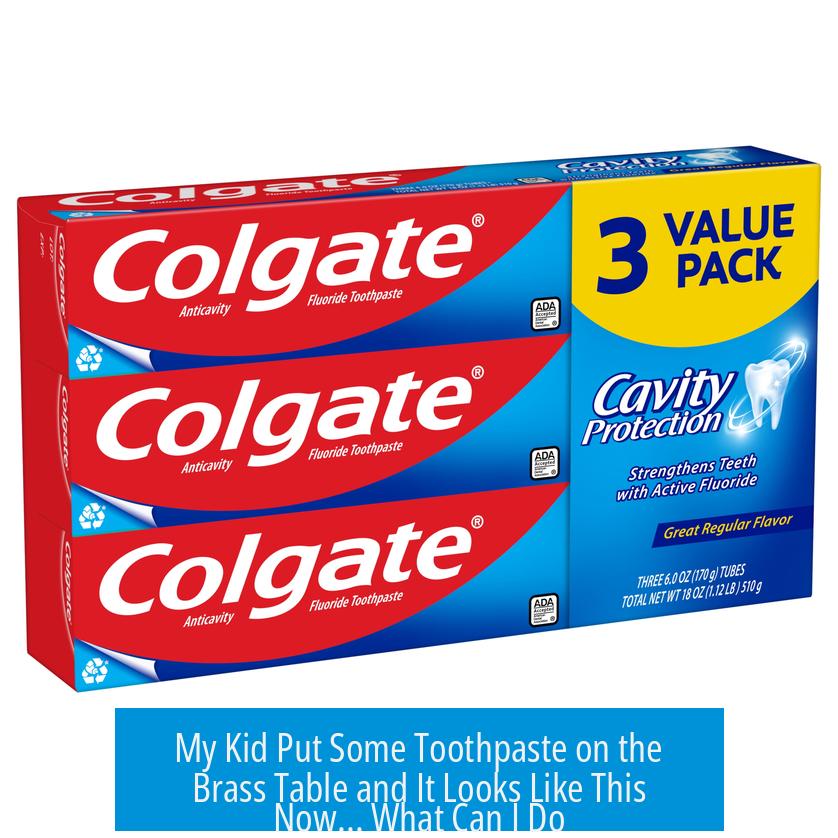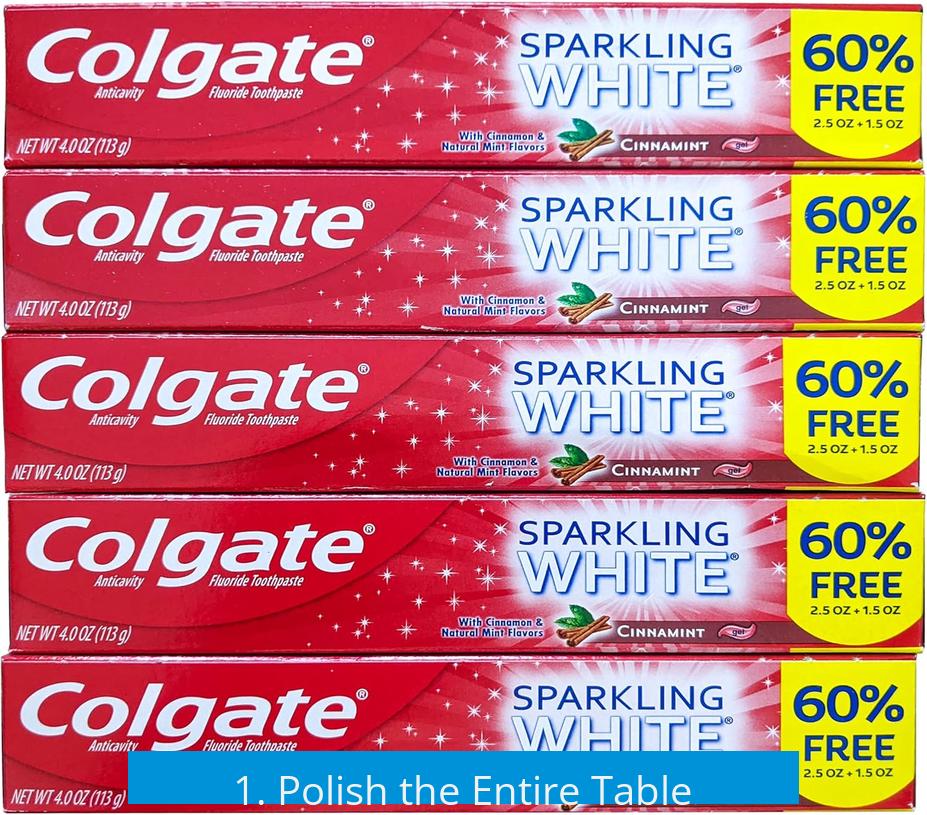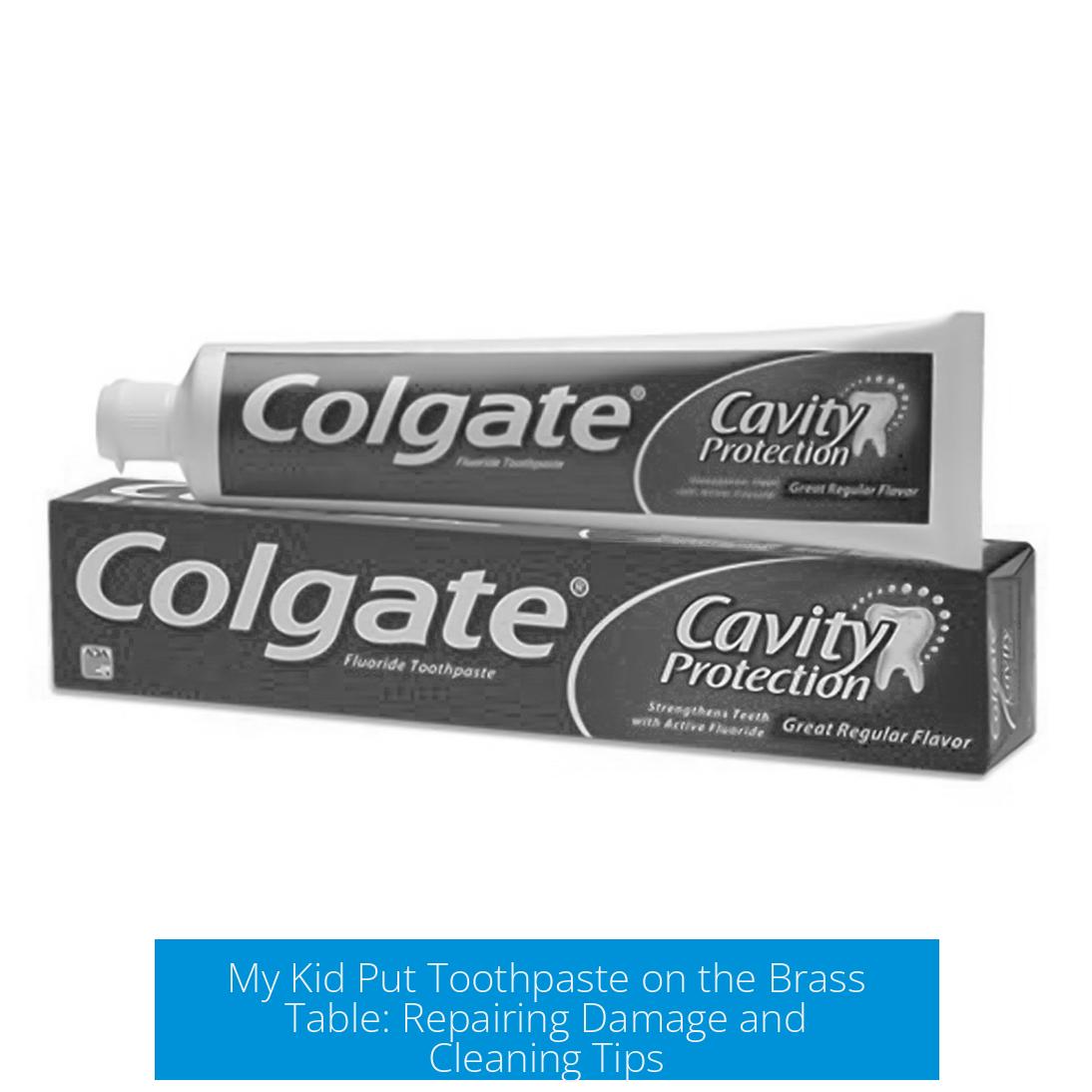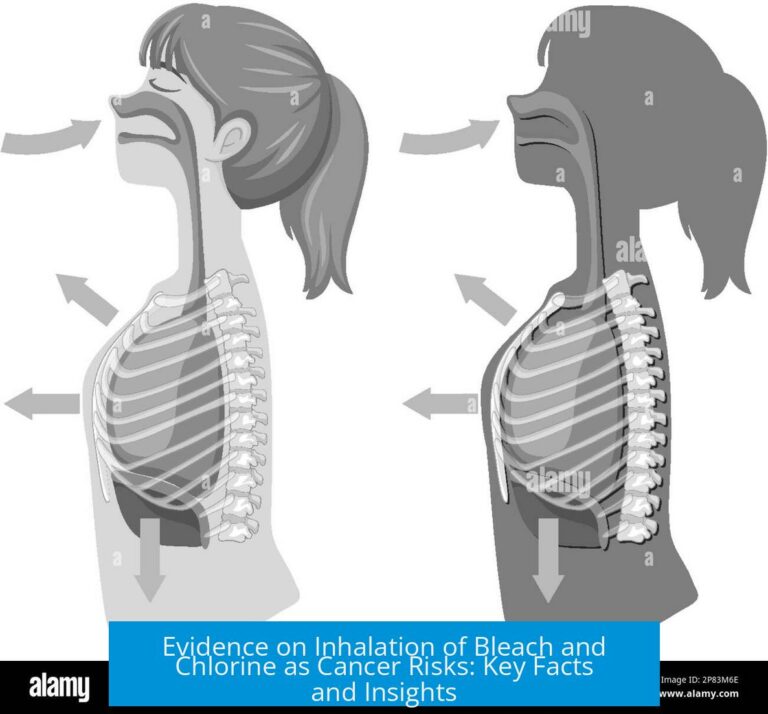My Kid Put Some Toothpaste on the Brass Table and It Looks Like This Now… What Can I Do?

When toothpaste is applied to a brass table, it often acts as a mild abrasive that polishes the treated area, altering its surface finish and appearance. To fix this, the best approach is to either polish the entire table to ensure a uniform look or restore the original finish by re-brushing or refinishing the surface. Attempting to treat the marked spot alone usually leads to a visible difference, as the toothpaste smooths and brightens the metal in that area, causing a contrast with the rest of the table.
Understanding the Effect of Toothpaste on Brass
Toothpaste contains tiny abrasive particles designed to clean and polish teeth. When placed on brass, those abrasives lightly polish the metal’s surface. This polishing smooths the affected region, causing it to reflect light differently and appear shinier than the untreated parts.
- Toothpaste acts as a micro-abrasive to brass, polishing the surface.
- The polished area becomes smoother and reflects light more evenly, contrasting with the table’s original brushed texture.
- If the toothpaste contains peroxide, it may cause slight oxidation, although this is less visible than the abrasion effect.
- The table may have had a lacquer or protective coating that the toothpaste dissolved or abraded away.
Brass is a relatively soft alloy, which makes it susceptible to scratches and changes in finish from abrasives. The toothpaste’s abrasives remove microscopic layers of metal or finish, altering the texture and shine locally.
Immediate Steps to Correct the Toothpaste Mark
To restore the brass table, consider options that make the finish consistent across the surface. Spot-treating the toothpaste mark is unlikely to match the rest of the table due to difference in texture and reflection.
1. Polish the Entire Table

Using the same toothpaste or a suitable metal polish, gently polish the entire tabletop to create an even finish.
- Apply toothpaste evenly over the surface and buff it.
- Rinse with water and dry thoroughly.
- This evens out the reflection and texture.
- If you prefer a polished brass look, continue polishing to achieve a shiny, mirror-like finish.
Replicating the exact brushed finish may require professional brushing techniques or abrasive pads.
2. Restore Original Texture by Re-Brushing
If the brushed finish is desired, re-brush the entire surface using fine abrasive pads or steel wool matching the original grain direction. This removes the polished spot’s gloss and blends it with the rest of the table.
3. Alternative Measures to Hide the Mark
- Place a decorative item such as a vase or lamp over the area.
- Use a tablecloth or doily to cover the surface.
- Consider refinishing or replacing the table if the mark is highly visible and bothersome.
Other Cleaning Methods and Considerations
Besides toothpaste, some household substances can clean and restore brass:
- Lemon, lime, or vinegar mixed with salt can create a paste to remove tarnish.
- Specialized brass polishes like Brasso or Barkeeper’s Friend offer professional grades of cleaning without harsh abrasion.
- Avoid using harsh chemicals that may damage coatings or discolor the metal.
- Check the manufacturer’s care instructions before attempting any cleaning.
Testing an inconspicuous area first is advisable to prevent further damage.
Material and Finish Considerations
Brass tables often come with surface treatments to protect and enhance appearance. These can include:
- Lacquer or clear coatings that prevent tarnishing and scratches.
- Brushed or polished textures that influence light reflection.
Applying an abrasive toothpaste may abrade or remove any lacquer, causing the affected area to be exposed and polished, differing visibly from the rest of the table.
In this context, toothpaste damage is generally a change in finish rather than permanent harm to the metal itself.
Personal Experiences and Anecdotes
Many users report that toothpaste works surprisingly well as a mild abrasive for polishing metals. In some cases, toothpaste cleaned metal surfaces so effectively that it became a go-to solution for stubborn stains.
A story from military training recalls toothpaste cleaning metal bathroom stalls thoroughly, restoring shine even better than commercial products.
For families, accidental toothpaste marks from children are common. Patience and some creative solutions often resolve the issue without lasting problems.
Summary of Practical Solutions
| Action | Description | Pros | Cons |
|---|---|---|---|
| Polish Entire Table with Toothpaste | Apply and buff toothpaste over whole surface to match shine | Uniform finish, inexpensive, easy | Finish becomes polished, not brushed |
| Re-Brush Surface | Use abrasive pads to restore original brushed texture | Restores original look | Requires skill and tools |
| Cover Mark | Place decorative objects or use tablecloth | Quick and non-invasive | Does not restore table finish |
| Use Specialized Brass Polish | Apply commercial metal cleaners like Brasso | Professional finish, easy application | May alter finish, costlier |
Key Takeaways
- Toothpaste polishes brass by abrading its surface, altering texture and shine.
- The brushed look differs from polished areas in how they reflect light.
- Polishing the entire table or re-brushing can restore evenness in finish.
- Covering the affected area with objects or linens can hide the mark temporarily.
- Household acid-salt pastes or store-bought brass polishes are alternative cleaning options.
- Always consider protective coatings that toothpaste may have removed or damaged.
- Test any cleaning method on a small area first to avoid worsening the problem.
Why does the toothpaste make the brass table look different?
Toothpaste acts as a micro abrasive and polishes the brass. This smooths the surface and makes it reflect light more sharply. The rest of the table usually has a brushed finish that scatters light, so the polished spot looks shinier and different.
Can I remove the toothpaste mark and restore the table to its original look?
You can’t perfectly reverse the change because the finish is altered. If you want the brushed look back, you’ll need to buff the whole table again. Otherwise, polishing the entire surface to a shine will make the table uniform.
Is it a good idea to put toothpaste on the rest of the brass table?
Applying toothpaste on the whole table will create a consistent polished finish. Toothpaste contains abrasives which can brighten the surface. But this will change the original brushed appearance to a shiny one.
Are there alternative ways to hide or fix the toothpaste mark without polishing?
You can cover the spot with decorative items like a vase or lamp. Using a tablecloth or doily also hides the mark without altering the brass finish. These options avoid any risk of further altering the table’s surface.
Could the toothpaste have damaged a protective coating on the brass?
Some brass tables have protective coatings like lacquer. Toothpaste might have abraded or dissolved this layer, causing the finish to change. This is why the spot looks different and reflects light unevenly now.
What else can I try to clean or treat the toothpaste spot on brass?
Try a paste made from lemon juice or vinegar and salt to gently clean tarnish. Commercial products like Brasso or Barkeeper’s Friend also work on brass. Test cleaning methods on a small area first to avoid further changes.





Leave a Comment